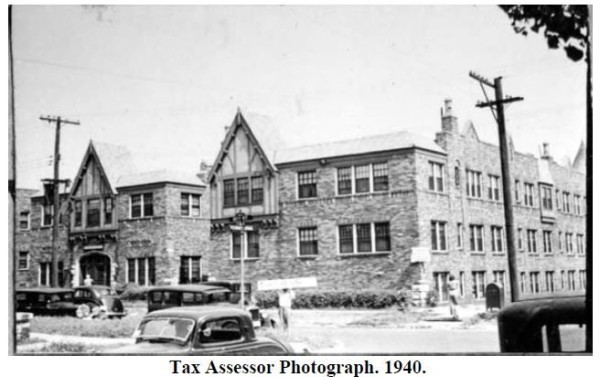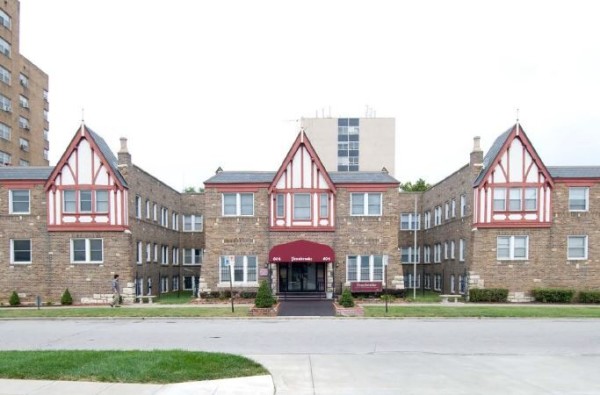Pennbrooke Apartments
Quality Hill, Kersey Coates, Kansas City Cable Railway, Tudor Revival, working class

Quality Hill, the Kansas City, Mo. neighborhood established by ol’ Kersey Coates in the 1870s, once housed the city’s wealthiest, most elite and fortunate citizens in splendid manors atop the bluffs. Continuously a residential area, over time the Quality Hill demographic transitioned from a rich community to a working class one. This was a result of several factors, including the proximity to the stockyard smell, the Kansas City Cable Railway line from the Hill to the West Bottoms (where many lower class workers labored), a massive population increase in Kansas City in the early 1900s and southward expansion – Quality Hill, by the late 1920s, had become old news.
With an abundance of job opportunities for unskilled immigrants and huge numbers of people relocating to Kansas City, the need for lodging grew alongside the population. It was then that the era of “Working Class and Middle Income Apartments” arose (as described by the Missouri Department of Natural Resources), right in the middle of the one-time affluent Quality Hill.
Most of the impressive original estates of Quality Hill were sundered from large, single family homes into multi-family dwellings or boarding houses. But it wasn’t only the homes undergoing construction – the first apartment buildings in the city for those middle-class workers to reside at a reasonable price, consistent with their wages, arose quickly and in great quantity. Alas, the new working-class demographic and multi-family cheap housing rendered the grand old Quality Hill neighborhood a reputed “slum”.
The Pennbrooke Apartment Building on West 10th Street may have furthered that perception in the 1930s, but today is a proud addition to the National Register of Historic Places.
In 1926, architect Nelle E. Peters completed the 66-unit, brick and stone Tudor Revival apartment building, each individual dwelling complete with a convenient kitchenette – a rarity, in that many multi-family structures shared a communal dining and kitchen area – and the kitchenette caught on as a trend.
Pennbrooke Apartments was alternately listed legally as Pennbrook Apartments and Pennbrook Apartment Hotel. It’s unclear exactly when the “e” at Pennbrooke’s end became a permanent fixture, though it became so at least 30 to 40 years ago (sometime during the 1970s the apartment building began appearing as Pennbrooke in listings).
Pennbrooke is one of few buildings in Kansas City of the Tudor style whose façade remains intact and unchanged, even 90 long years later.











